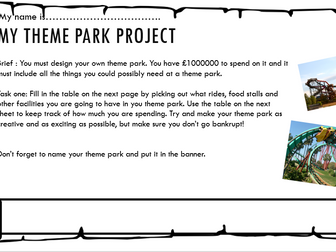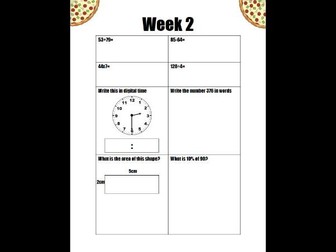Ratio and Proportion Harry potter Themed Unit
Four lessons all in one presentation: direct proportion, creating ratio, simplifying ratio and sharing using ratio.<br />
<br />
Direct proportion<br />
With a quick Harry Potter themed starter followed by a few diagnostic questions to see where your students are in terms of Direct proportion, the main task consists of creating Ron's recipe book. They will use direct proportions to work out the amount of ingredient needed to make dishes like Mad Eye Muffins and Voldemort Vindaloo to serve different amounts of people.<br />
<br />
Creating Ratio<br />
<br />
A starter based on the previous lesson direct proportion. They will have to create a shopping list for the ingredients to feed the masses at a large Hogwarts banquet. This will then be followed by using different Magical dishes to create ratios of mains to desserts. Then a short game of beat Harry Potter. The class have to work out the ratio of items on the board before Harry catches the Snitch. <br />
<br />
<br />
Simplifying ratio<br />
<br />
Snape immediately stops the Creating ratio lesson to tell us how we can simplify. An example is given with flying cars and Bertie Botts Beans. Followed by a series of questions and a wand to reveal the answers.<br />
<br />
Sharing using Ratio<br />
<br />
We visit Diagon alley in our starter. Differentiated shopping lists are attached to buy the different things from Diagon Alley. They will have to find how much they need to spend. After the starter, Ron will show the class what ratio really means and how to share using ratio by sharing sweets with Harry (of course Harry gets more he is the chosen one). Then followed up with some class questions to check their understanding and again a list of questions and a wand to reveal their answers.




